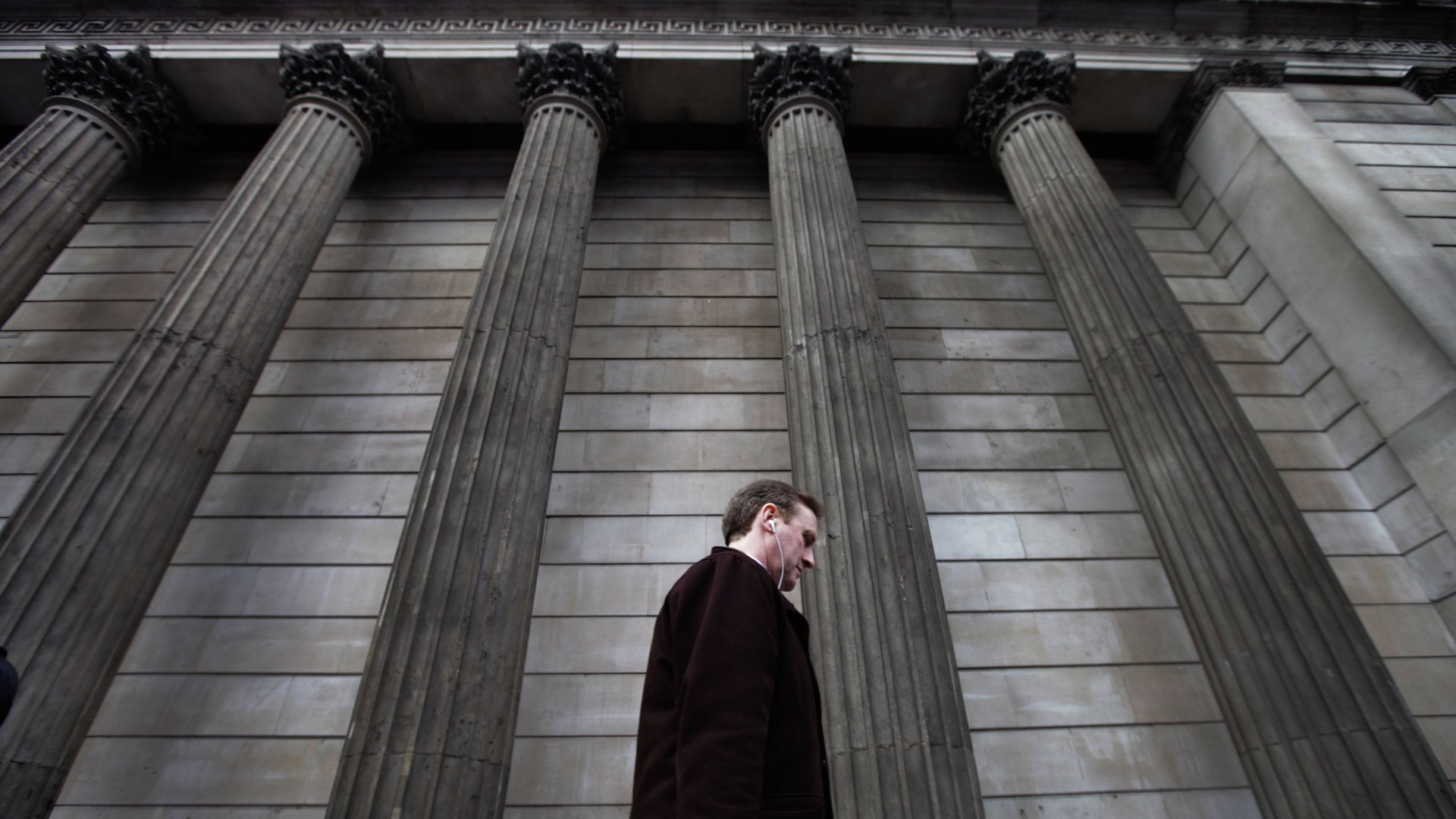UK banks have £50 billion less than they think they do
The UK’s banking watchdog, the Financial Services Authority (FSA), has put domestic banks up to the test and found them wanting. Banks’ projections about their capital buffers and risk exposure are far too rosy, the Bank of England said in a statement today.


The UK’s banking watchdog, the Financial Services Authority (FSA), has put domestic banks up to the test and found them wanting. Banks’ projections about their capital buffers and risk exposure are far too rosy, the Bank of England said in a statement today.
All told, the regulators discovered, UK banks have £50 billion ($75.6 billion) less capital than they estimated they had—meaning they will have to raise £25 billion to meet new, stricter expectations by the end of the year.
Today’s statement reveals three places where UK banks went off-track, saying losses for the next three years could be larger than expected:
- £30 billion: Certain “high-risk loan portfolios” that are highly exposed to “UK commercial real estate and vulnerable euro-area economies.”
- £10 billion: “Future conduct costs” (read: legal costs) that are higher than banks currently project
- £170 billion: The quantity of risk-weighed assets that would be on banks’ books if they used more prudent risk policies.
“Taken together,” the BoE writes, “the effect of these three adjustments would be equivalent to around a £50 billion reduction in the regulatory capital of the major UK banks and building societies.”
This announcement follows US stress tests conducted earlier this month that found that all but one major US bank had enough capital to weather what the Federal Reserve considers the worst-case scenario for markets. That said, the Fed did take issue with plans that would give back too much capital to JP Morgan and Goldman Sachs shareholders, suggesting that they needed to cut back on dividends and/or stock buybacks.
Differences in the speed and magnitude of banking reform are creating tensions between various international regulatory authorities. But at least those regulators can agree on one thing: banks need high levels of capital on hand to prevent against unforeseen shocks.
Even so, such vehement emphasis on capital might be misplaced; let’s not forget that the failed—and since liquidated—Dutch SNS Real passed an EU capital exercise (pdf) with flying colors back in October 2011.